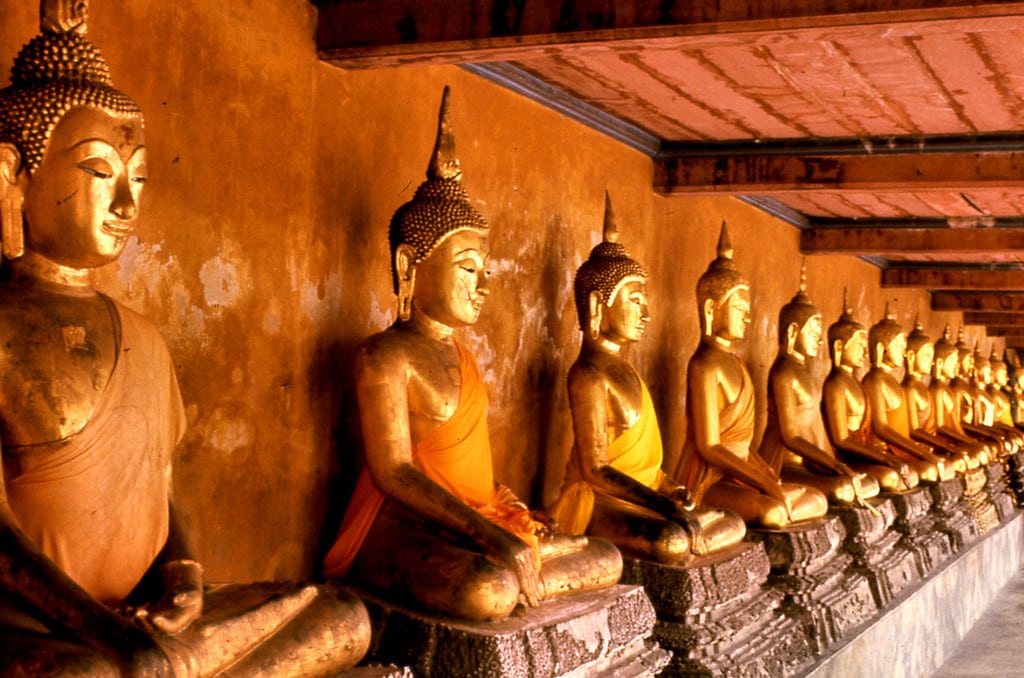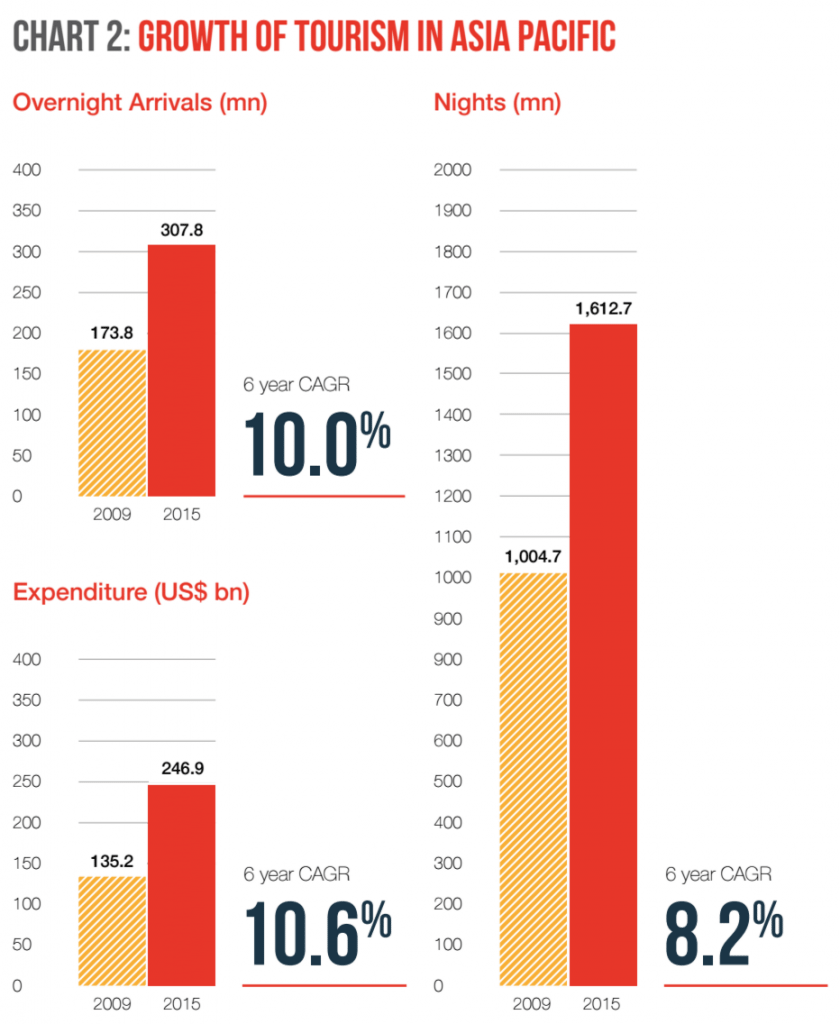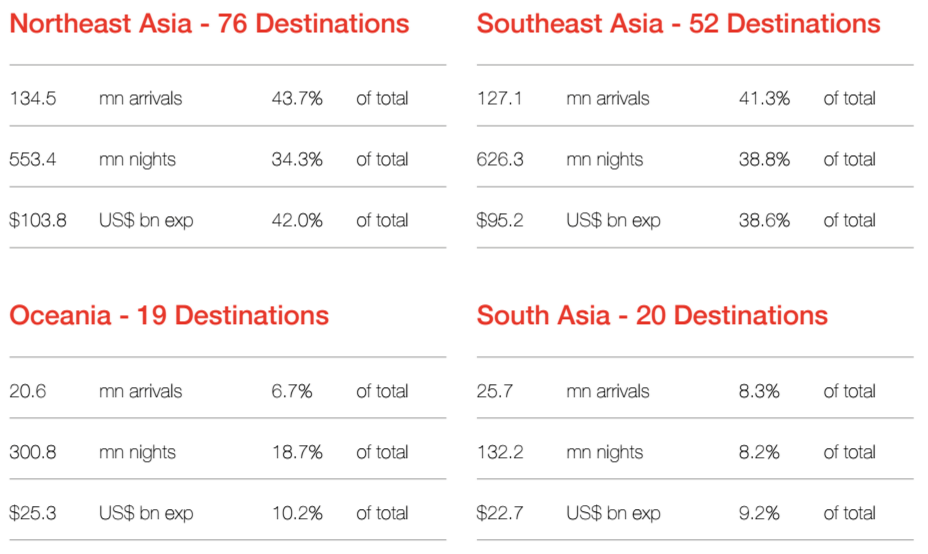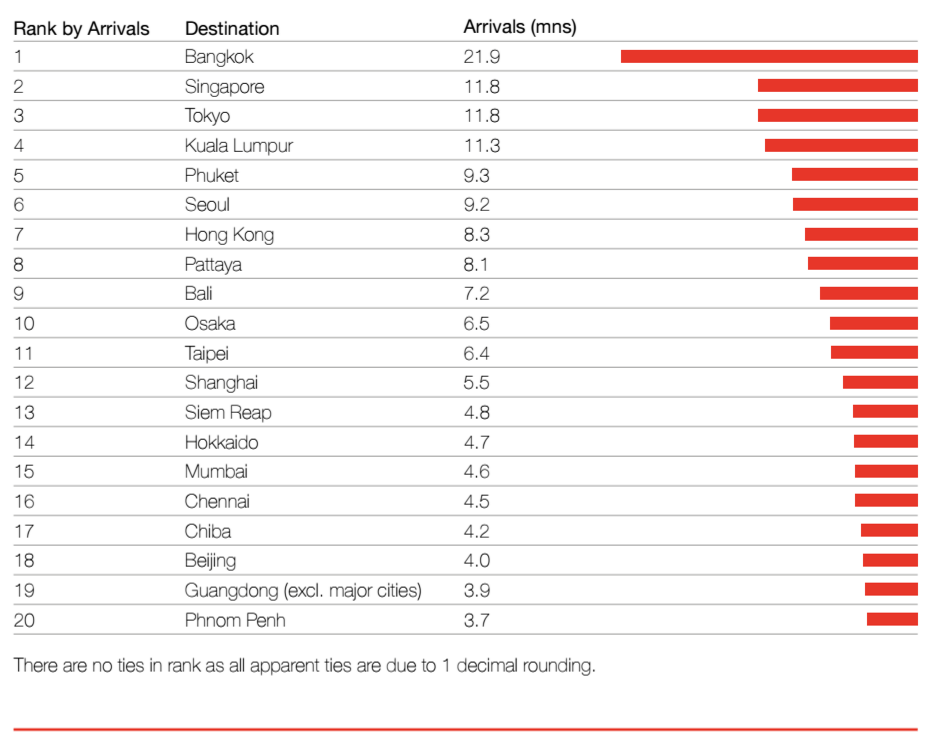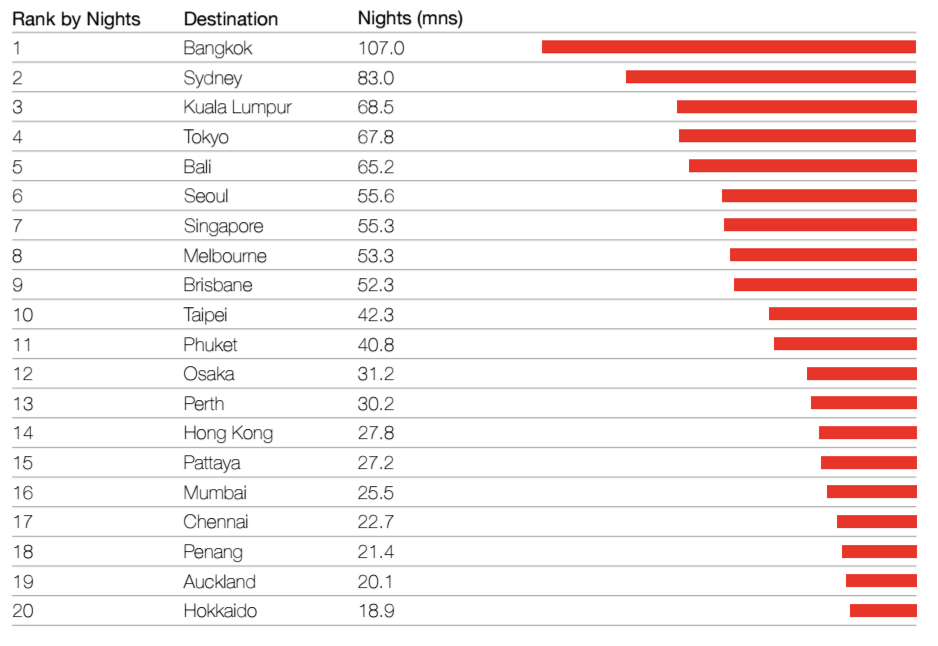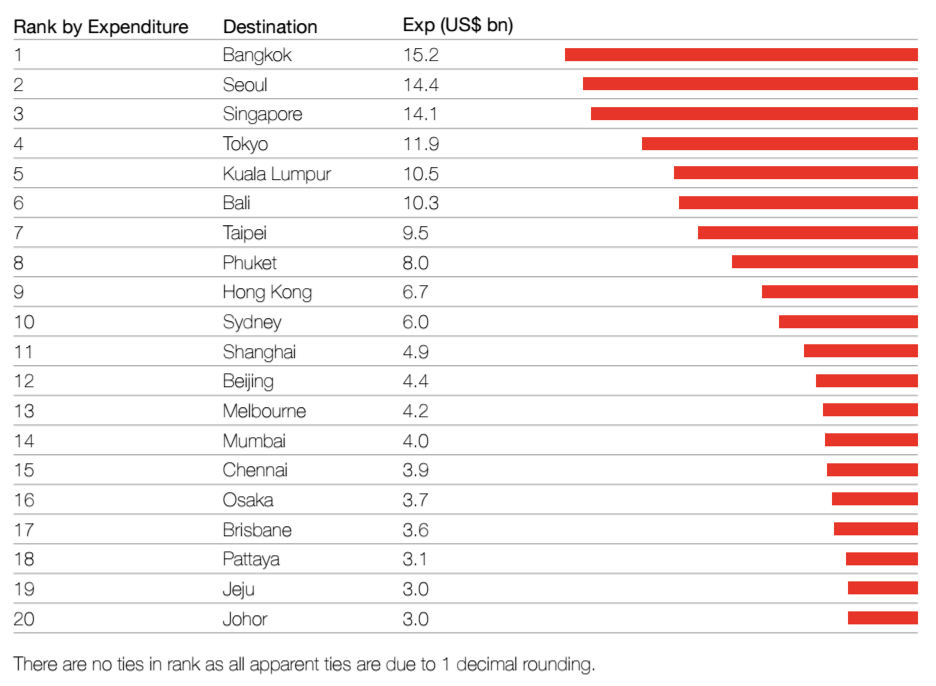Skift Take
The power of the outbound Chinese traveler should not be underestimated.
More than 1.18 billion people traveled internationally last year and several Asia-Pacific cities collectively claim nearly 25 percent of those arrivals.
MasterCard’s inaugural Asia-Pacific Destinations Index for 2015 examined international tourist arrivals, hotel room nights, and tourist spending in 167 destinations in 22 countries and Bangkok came out as the clear winner. Last year was the first that Bangkok surpassed 20 million international arrivals and had the most international visitors of any city in Asia-Pacific, according to MasterCard.
And apparently martial law and a military coup in Thailand last year didn’t keep tourists away as several other Thai cities ranked above larger cities elsewhere in the region. Phuket, Thailand, for example, had 9.3 million international arrivals compared to Hong Kong’s 8.3 million and Pattaya, Thailand had 8.1 million international arrivals versus Shanghai’s 5.5 million. Bangkok (with $15.2 billion in tourism expenditure) also surpassed economic powerhouses with major tourist attractions like Shanghai, Beijing, Hong Kong and Tokyo for tourist spending.
“As a source of tourists to Asia-Pacific, China looms large and many Asian cities including Bangkok have benefitted hugely,” said MasterCard. “China is the number one source country for Bangkok, with Chinese tourists accounting for more than 30 percent of total visitors to the city in 2015, up from about seven percent in 2009.”
“Bangkok is appealing to Chinese tourists not just due to proximity but also cultural similarity. While of course it is important to ensure that a tourist destination doesn’t become over reliant on one source of visitors it is inevitable that, as the Chinese middle class grows and begins to travel more often, they make up a bigger proportion of tourists to cities around the world.”
These numbers don’t tell the whole story, however, as Mainland Chinese tourists visiting Hong Kong and Macau and travelers from those cities visiting Mainland China are excluded from the data. Chinese tourists are still the largest group of outbound travelers visiting destinations in the region (see Chart 3 for example). Asia-Pacific had 307.9 million international arrivals last year, making it one of the fastest-growing regions for tourism. Though that number is still half of the 609 million international tourists who visited Europe in 2015.
Chart 1: Asia-Pacific makes up about 23 percent of the world’s international overnight arrivals. Asia-Pacific has been the fastest-growing region for international tourism since 2005, with South Asia and Southeast Asia the two fastest growing sub-regions at 8.6 percent and 7.9 percent growth during the past decade, respectively, according to the U.N. World Tourism Organization.
Chart 2: Northeast Asia, which includes China, Japan and South Korea had the region’s most international arrivals in 2015 (134.5 million) and Southeast Asia had the second most (127.1 million). Mainland Chinese travelers going to Hong Kong and Macau and vice versa are excluded from the Northeast Asia total.
Chart 3: Bangkok had the most international arrivals of any Asia-Pacific city in 2015 (21.9 million). Seven of the top 20 saw more than 10 percent growth in international overnight arrivals between 2014 and 2015 – Chiba, Japan (56.6 percent), Osaka, Japan (54 percent), Tokyo (53.2 percent), Hokkaido, Japan (50.3 percent), Bangkok (28.6 percent), Phuket, Thailand (15.5 percent) and Pattaya, Thailand (10 percent). Mainland Chinese tourists contributed the bulk of growth in these seven destinations–more than 70 percent of the growth for all three Thai destinations and more than 45 percent of the growth for all four Japanese destinations.
Chart 4: More destinations in Southeast Asia and Oceania (Australia and New Zealand) show up in the ranking for room nights in 2015, such as Perth, Melbourne and Brisbane, Australia and Auckland, New Zealand.
Chart 5: Bangkok also ranked number one in total tourist expenditure at $15.2 billion, with Seoul ($14.4 billion) ranking second followed by Singapore ($14.1 billion), Tokyo ($11.9 billion) and Kuala Lumpur ($10.5 billion).
Source: MasterCard
The Daily Newsletter
Our daily coverage of the global travel industry. Written by editors and analysts from across Skift’s brands.
Have a confidential tip for Skift? Get in touch
Tags: bangkok, china outbound, Mastercard, thailand
Photo credit: Bangkok received the most international arrivals of any city in Asia-Pacific that MasterCard looked at for its index. Pictured here is the Wat Mahathat Yuwaratrangsarit temple in Bangkok. telmo32 / Flickr
